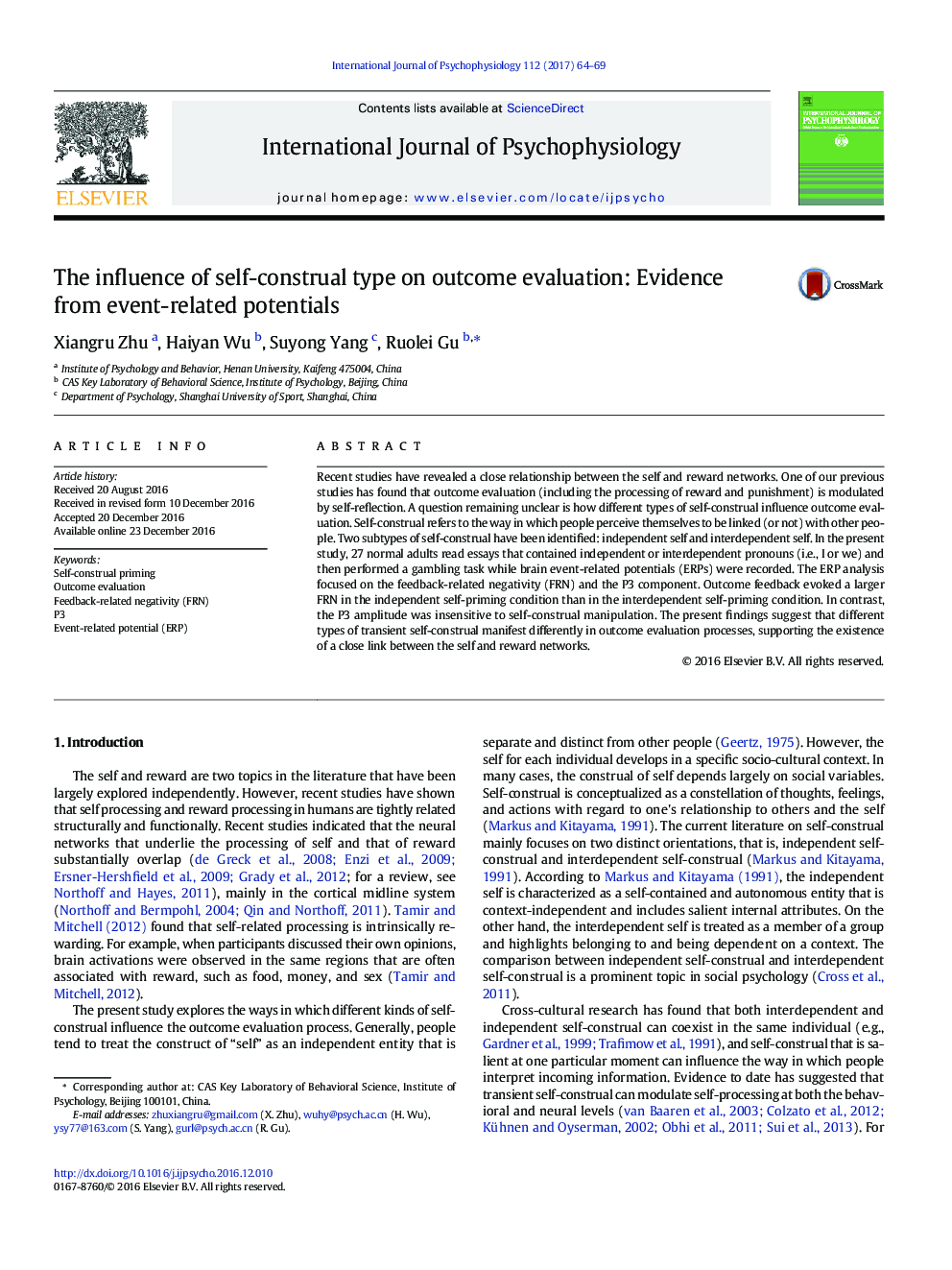| کد مقاله | کد نشریه | سال انتشار | مقاله انگلیسی | نسخه تمام متن |
|---|---|---|---|---|
| 5042347 | 1474384 | 2017 | 6 صفحه PDF | دانلود رایگان |
- The impact of different types of self-construal on outcome evaluation is studied.
- Two types of self-construal in this study are independent and interdependent self.
- Outcome feedback elicited a larger FRN in the independent self condition.
- The P3 component was insensitive to self-construal manipulation.
Recent studies have revealed a close relationship between the self and reward networks. One of our previous studies has found that outcome evaluation (including the processing of reward and punishment) is modulated by self-reflection. A question remaining unclear is how different types of self-construal influence outcome evaluation. Self-construal refers to the way in which people perceive themselves to be linked (or not) with other people. Two subtypes of self-construal have been identified: independent self and interdependent self. In the present study, 27 normal adults read essays that contained independent or interdependent pronouns (i.e., I or we) and then performed a gambling task while brain event-related potentials (ERPs) were recorded. The ERP analysis focused on the feedback-related negativity (FRN) and the P3 component. Outcome feedback evoked a larger FRN in the independent self-priming condition than in the interdependent self-priming condition. In contrast, the P3 amplitude was insensitive to self-construal manipulation. The present findings suggest that different types of transient self-construal manifest differently in outcome evaluation processes, supporting the existence of a close link between the self and reward networks.
Journal: International Journal of Psychophysiology - Volume 112, February 2017, Pages 64-69
